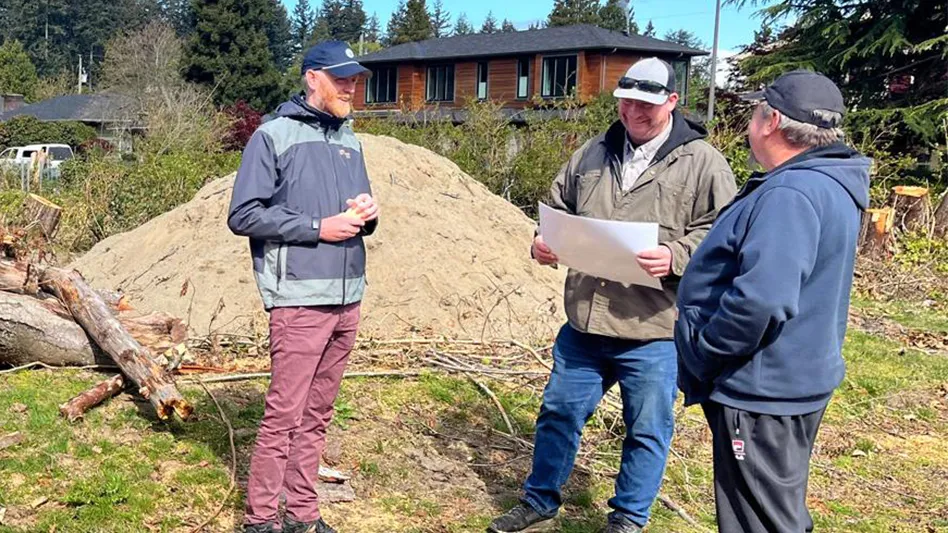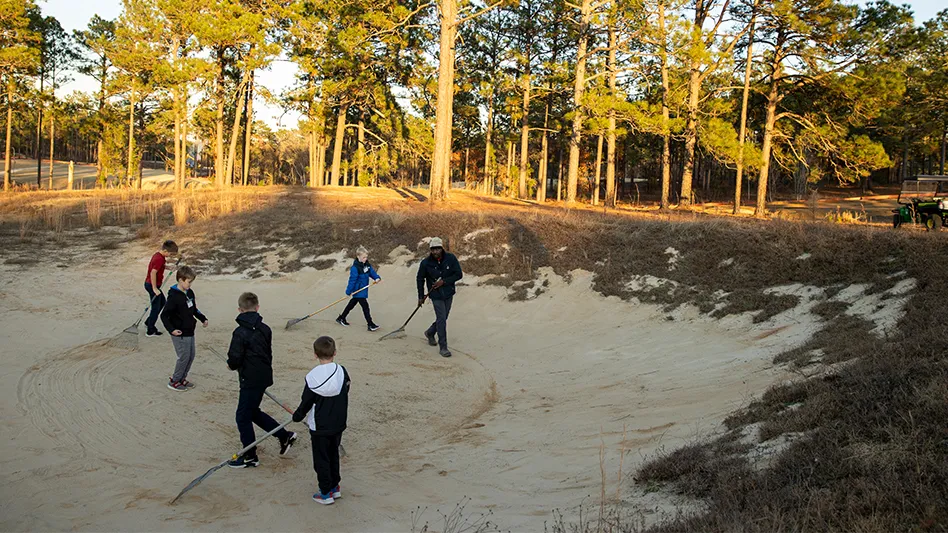When clubs start their master plans, they focus on design issues. But it’s the phasing plan suggested by most master plans that often turns out to be one of the most critical decisions clubs face. It can determine a project’s success and whether it goes forward.
Historically, course renovations were executed in annual increments, except when required by disasters such as floods. These long-term plans kept a course open, kept revenue flowing in the pro shop and dining facilities, and avoided debt. During the past decade, lower interest rates and the impatience of baby boomers has accelerated the frequency of renovations. However, the current credit crunch has spawned a counter-trend toward long-term plans despite reasonable rates.
When I study each case separately, I usually recommend a complete renovation if a course’s owner has the borrowing ability. There are advantages to single-year renovations. Architecturally, they achieve consistency in:
- Design. An architect’s style changes, just as some clubs change architects.
- Construction. Different contractors have different shaping and construction techniques, allowing all holes to have a consistent look.
- Play. Older USGA greens play differently than newer ones. When suppliers go out of business or are unable to provide consistent products from year to year, clubs are forced to use different greens mix or bunker sand.
- Maintenance. The aforementioned differences avoid separate maintenance regimens for every hole.
Imagewise, short-term programs minimize or even avoid problems of: - Resentment. Golf course disruption will be temporary, not continual.
- Direction changes. (See design bullet, above.)
- Lost momentum. Politics, costs and hassle can stop a project, leaving several long-standing problems and some new, out-of-place architectural features.
- Safety. Golfers won’t have to play around safety barriers, bare dirt and construction machinery.
The financial advantages of complete renovation include:
- Construction value. One new USGA green complex costs $70,000, while several might cost $45,000 each – a 36 percent savings – because the contractor’s mobilization and supervision expenses are similar whether building one green or 18, creating economies of scale.
- Architectural value. Architects charge the same for site visits, whether reviewing one or many holes, and usually charge a smaller percentage fee for a larger project. Fees can be 15 percent of a small project, but are more typically 6 to 8 percent of construction cost for larger ones. Additionally, larger projects attract better architects.
- Operational savings. Closing the course reduces, but not eliminates, maintenance and clubhouse operation costs rather than staying staffed to accommodate reduced play and revenue.
- Reduced revenue loss. An open facility should maintain cash flow, but partially open courses often experience significant revenue decline because golfers dislike playing through construction. Clubs that close for renovations have arranged alternate play venues, often making the “lost year” a unique experience for members.
When counting lost revenue and cost economies in a low-interest-rate environment, the cost of complete renovation is often similar to paying for projects individually, while resulting in a better product. The annual payment is obligatory, rather than optional, but “biggie sizing” construction projects makes a lot of sense in an ongoing business.
The caveat is this: These projects require extensive preplanning to ensure their benefits by finishing quickly. With a $3-million remodel in which the course is taken out of play for 18 months, lost revenue might be 33 to 50 percent of the total project cost. Reduce that to six to nine months, and the numbers are better. To accomplish this, project design usually must:
- Provide compensatory flood storage, avoid wetlands and minimize tree clearing to avoid environmental permitting restrictions.
- Use as many existing routing and features as possible.
- Use larger contractors and/or crews.
- Consider paying a premium or incentives for an accelerated schedule.
- Have strict schedule requirements and penalties in the specs.
- Have time to hit optimum grassing dates, but allow for weather delays.
- Use a lot of sod.
- Develop a fast-track, grow-in program.
The world changes from generation to generation. Our parents and grandparents prudently paid for things as they went, and that served them well. But with curent low-interest rates, high-quality contractors that can accelerate construction, and the importance of being competitive in the marketplace, it might be prudent to consider closing the course for a complete renovation.
Our parents and grandparents taught us to be financially conservative and to avoid excessive debt. However, they also told us, “If it’s worth doing, it’s worth doing right the first time!” and “Better to do it today than tomorrow.” That advice might not have been meant for golf course renovations specifically, but it applies. GCI
Jeffrey D. Brauer is a licensed golf course architect and president of GolfScapes, a golf course design firm in Arlington, Texas. Brauer, a past president of the American Society of Golf Course Architects, can be reached at jeff@jeffreydbrauer.com.

Explore the May 2008 Issue
Check out more from this issue and find you next story to read.
Latest from Golf Course Industry
- Let the species counting commence!
- Making Stowe more stunning
- Editor’s notebook: Future with a view
- USGA opens Golf House Pinehurst
- Bernhard Academy expands leadership team
- Another record year for research
- The Highlands pays more homage to Ross
- Audubon International adds veteran superintendent to leadership team





